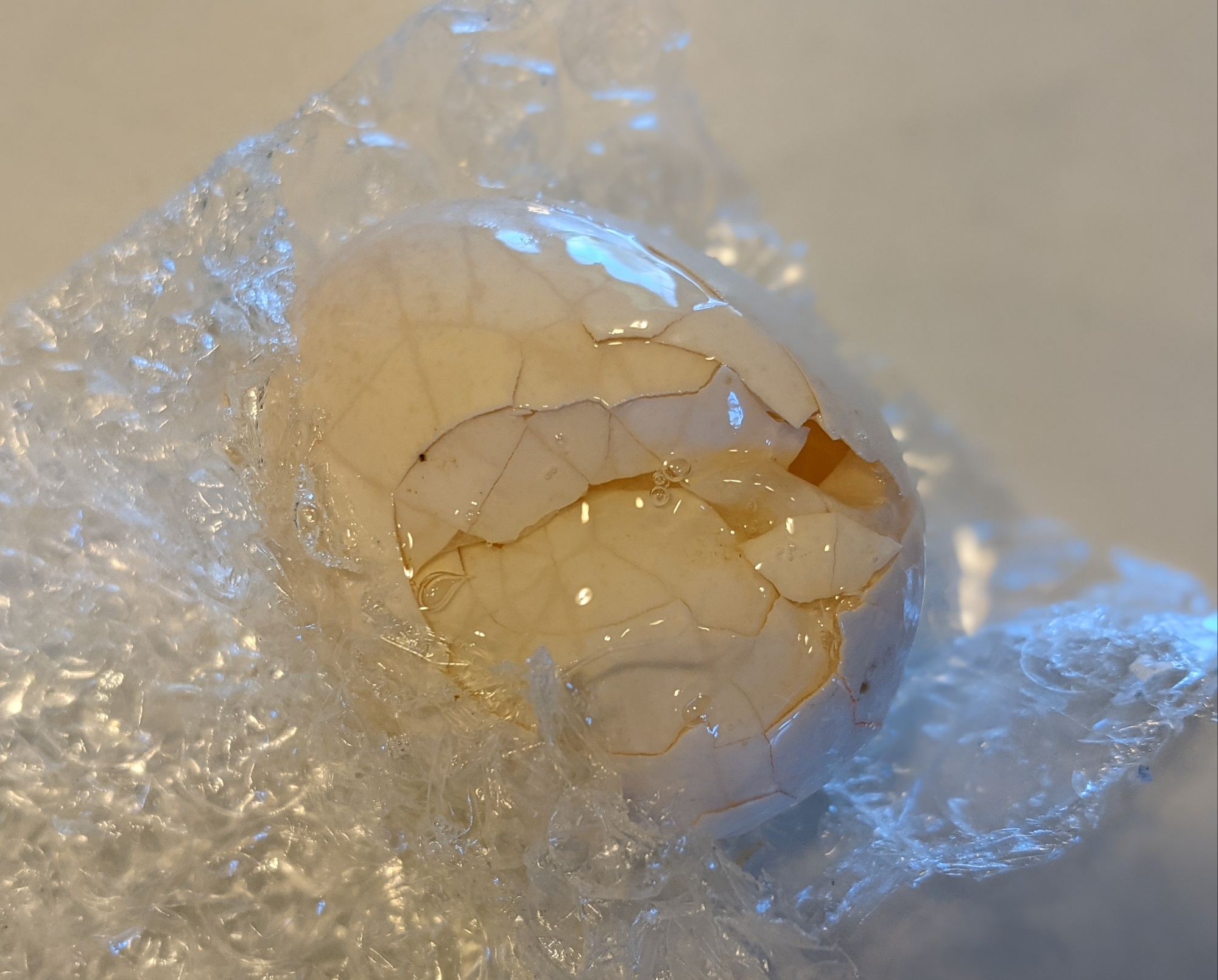
2021 was a bad – no, terrible – year for shipped hatching eggs. What, just a few years ago, may have been decent to good hatches, were, this year, either complete busts or very difficult hatches that resulted in only single hatchlings or a few struggling chicks; accordingly, I’m anointing 2021 the Year of the USPS Great Egg Delivery Debacle.
Yes, I’m placing the majority of the blame squarely on USPS. This organization is supposed to deliver packages timely and safely, and that simply hasn’t been the case. Between outright squashed boxes that they shamelessly deliver to boxes that look intact on the outside but contain crushed, cracked, and internally scrambled eggs, the USPS has fallen on its face.
This summer, I ordered the first set of Lavender Ameraucana eggs. They traveled about 700 miles and arrived in terrible shape – cracks, rolling air cells, damaged yolks. One egg was even going bad already. Just one chick hatched, assisted.
In the fall, I ordered a set of Lavender Ameraucana eggs from a different seller, located much closer. This time, USPS misrouted the eggs, turning a 3-day shipping timeframe into 5. Not helpful, given the perishable nature of hatching eggs – and it meant additional opportunities for rough handling. When they finally arrived, the eggs were badly damaged, including cracks and rolling air cells. These eggs were flown, so suffered from not only severe shaking/dropping/bumping, but also the stresses of pressure and temperature changes associated with being flown in the cargo hold of a plane. Of 9 eggs, only 1 even began to develop but was an early quitter. Zero hatch.
Less than a week later, I ordered another set from the same seller, hoping that the previous shipping fiasco was an anomaly and that this one would fare better. It did not. While it arrived more quickly, it was in a ridiculously mangled box that held one utterly crushed and oozing egg, along with several more severely cracked ones. Of a dozen eggs, only 3 made it to the second candling, and only 1 to lockdown.
Despite the odds, that little blue egg was determined to finish the race, developing great veins and making it to lockdown. Seeing the single egg in the hatcher was disheartening, nerve-wracking, and exciting at the same time. I tried not to get my hopes up. I candled daily to catch when the chick internally pipped, and when I saw that it had (a day before hatch day), I made a large hole to allow free access to air and to allow me to closely monitor it. Even with that level of assistance, there were no guarantees of a successful hatch – there could be congenital issues preventing hatch and the chick could simply have failed to hatch and died in shell. Thankfully, it did not. Though it was weak and needed supplemental vitamin support, it managed to hatch and join the older (and much larger) American Bresse chicks in the brooder. What a trooper!
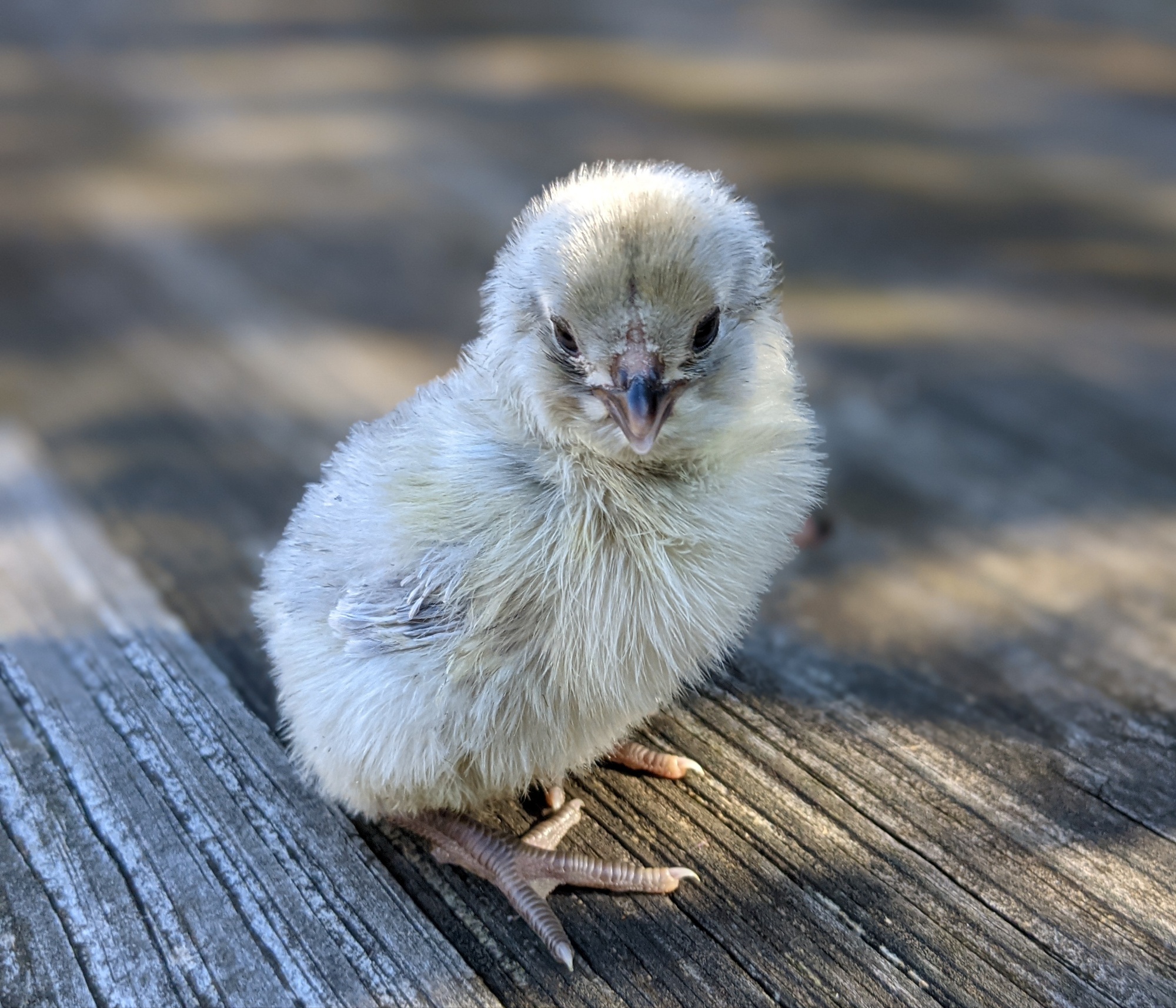
On to the American Bresse chicks: again, two sets of eggs purchased from the same seller, very close by. The first set arrived in very good condition, with minimally affected air cells. Fertility wasn’t great, but of the 8 that made it to lockdown, 7 hatched. Unfortunately, several of the hatchlings needed assistance because they had wry neck, which was remedied with a couple of days of vitamin supplements.
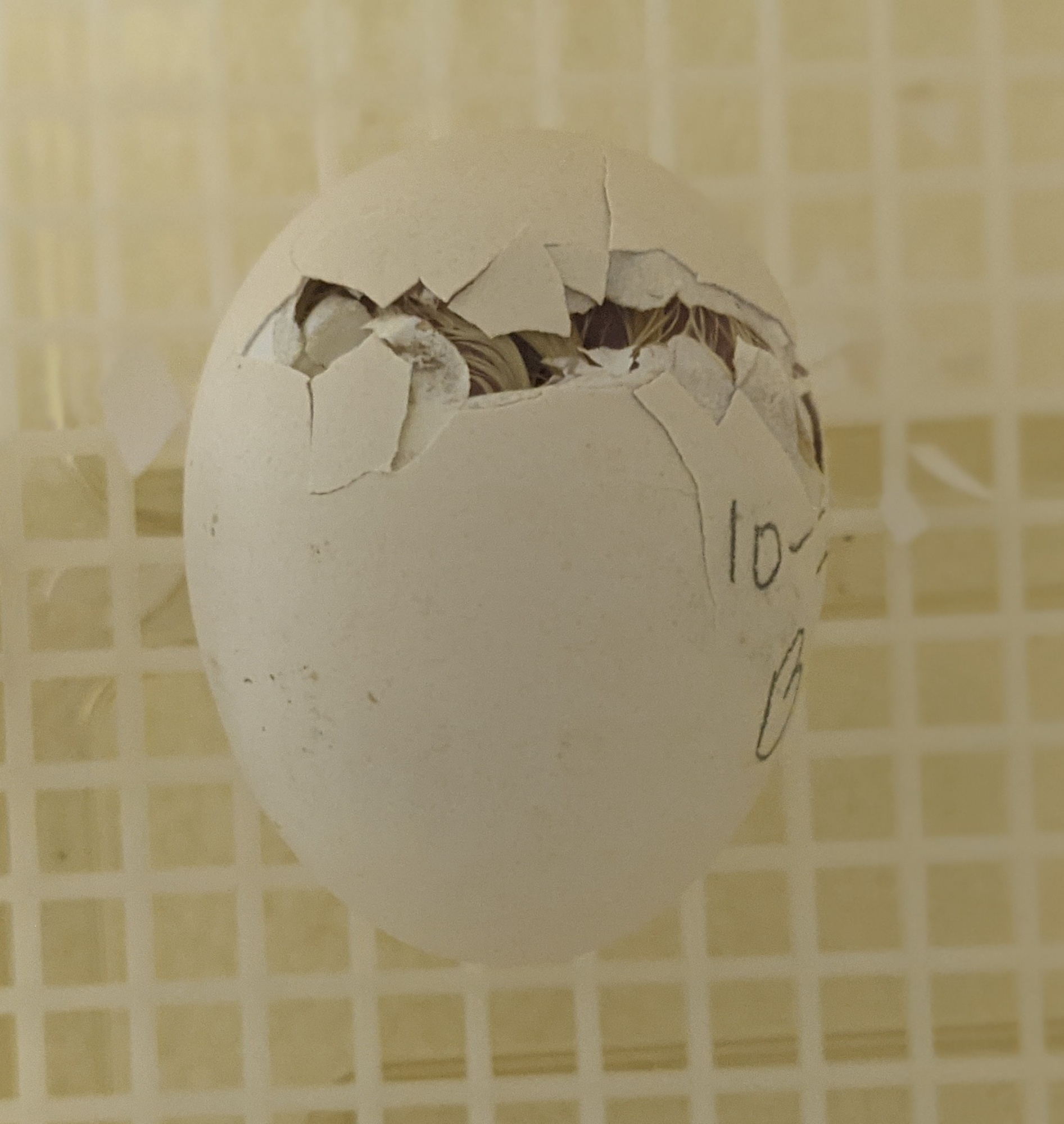
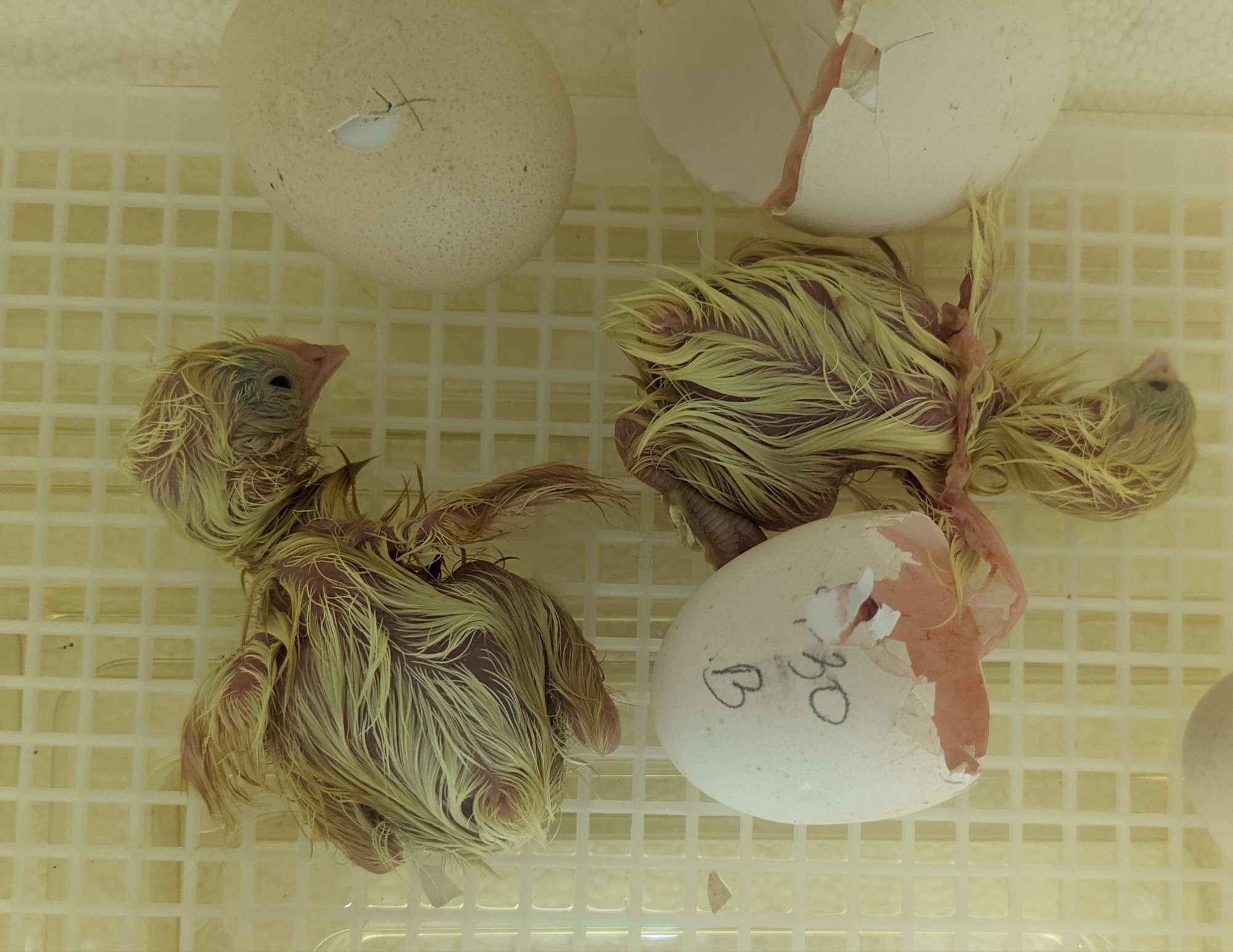
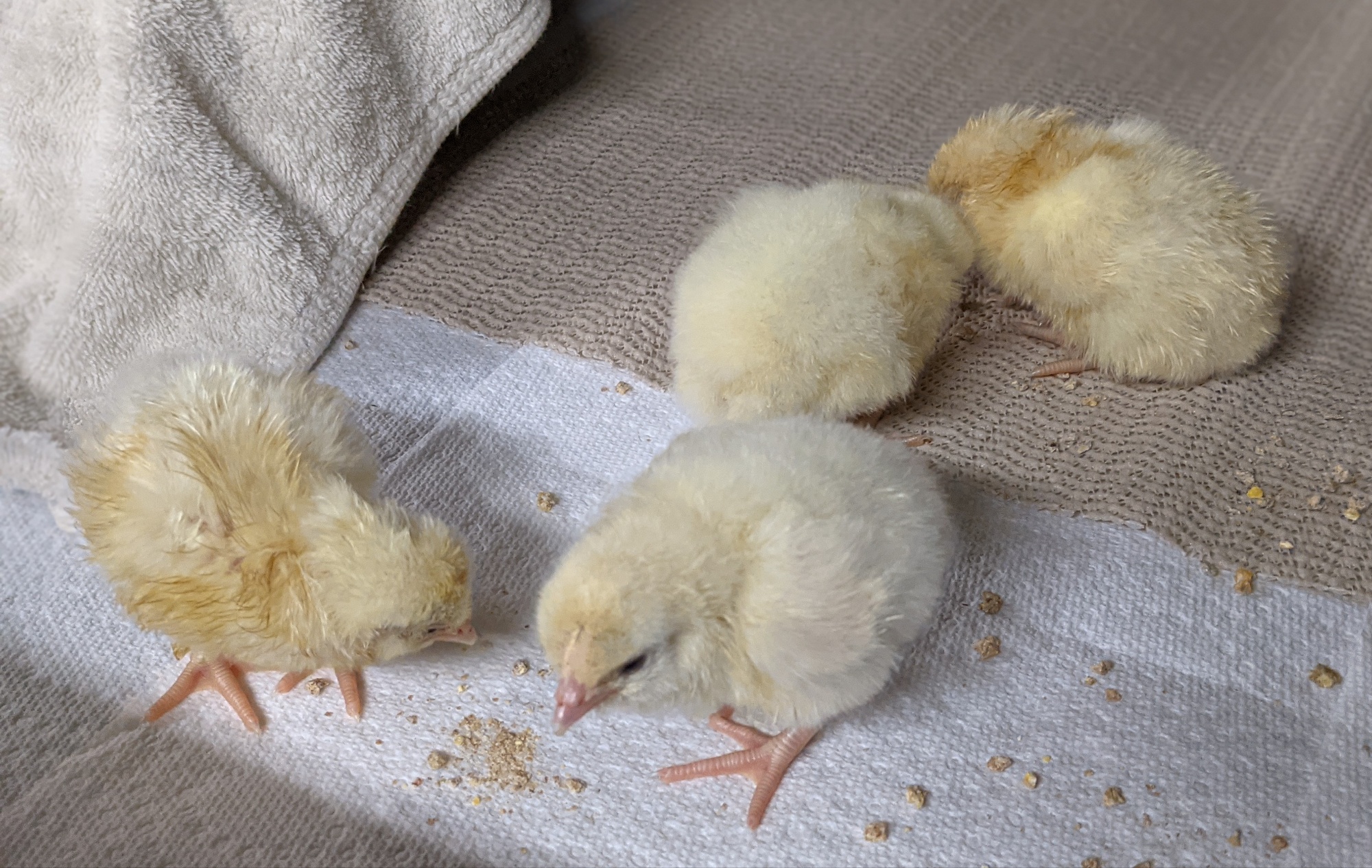
One chick, smaller than the rest, had some kind of congenital problem that prevented it from growing normally, and after several days of TLC and the last resort of tube feeding to try to keep it alive, the chick died early one morning. When it finally did pass, it was both a relief – I was at the point of contemplating whether euthanasia was the humane course of action – and a gut punch to see its tiny lifeless body. Looking at its siblings, now huge and healthy, makes remembering the little chick’s struggle for life even more poignant.
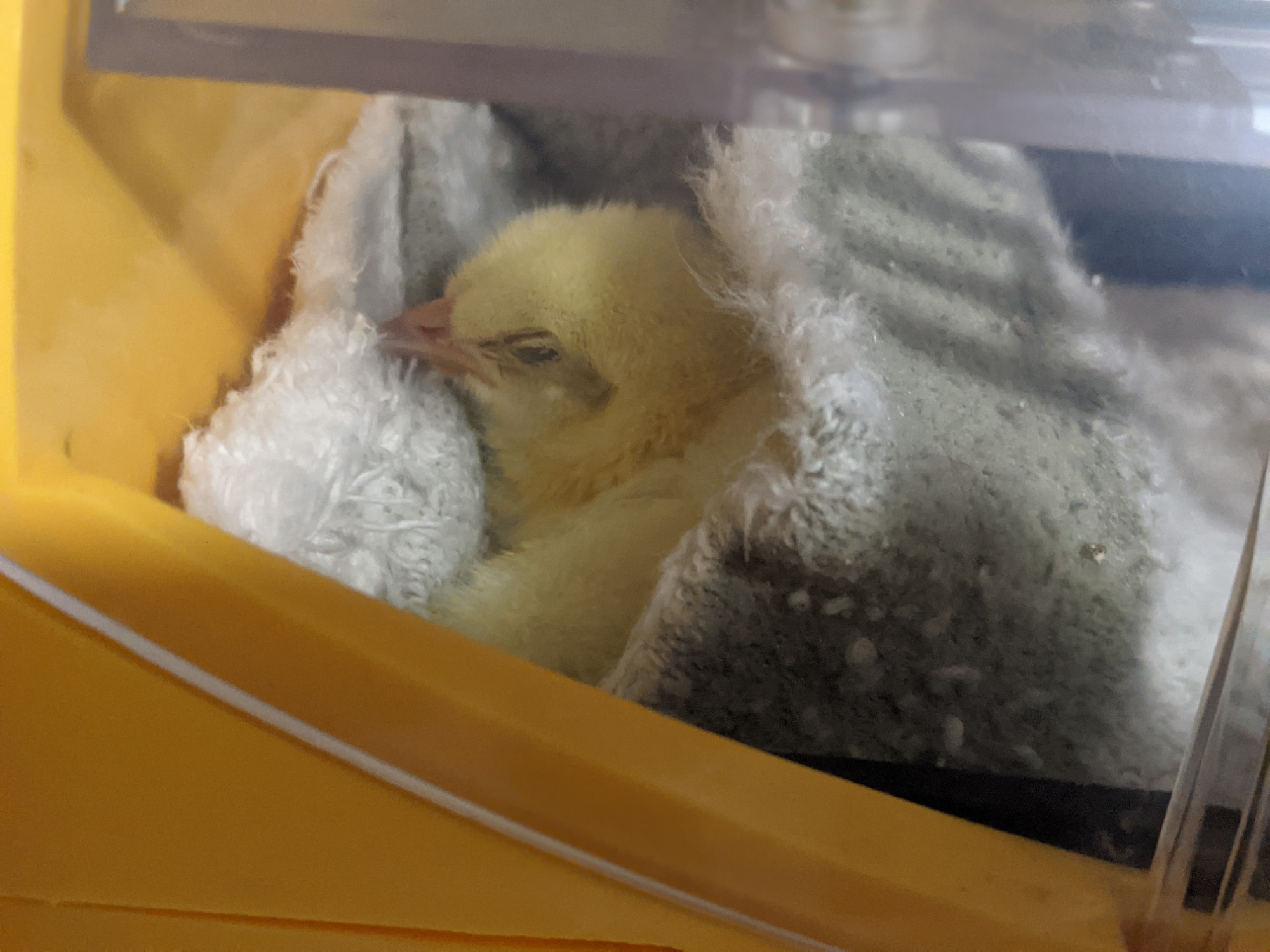
The second set of American Bresse eggs arrived even more quickly than the first (in just two days), but they were internally destroyed by the shipping stress. Yolks were clearly scrambled, air cells were rolling all over the place, there was condensation and cracks on eggs…a complete internal mess, basically. In addition, many of the eggs were nearly two weeks old when they arrived, and old eggs are more prone to damage due to the larger air cells, as well as less likely to hatch due to age. I knew the chance of success was very, very low. Almost non-existent. Upon first candling, my fears were realized: though nearly half had begun to try to develop, they ended with blood rings. Only one egg had developed some blood vessels, and they looked abnormal. Nonetheless, I left that single egg in the incubator to see if it would continue to develop. Unfortunately, my hunch was accurate, and I later confirmed that the egg had quit as I had suspected. Zero hatch.


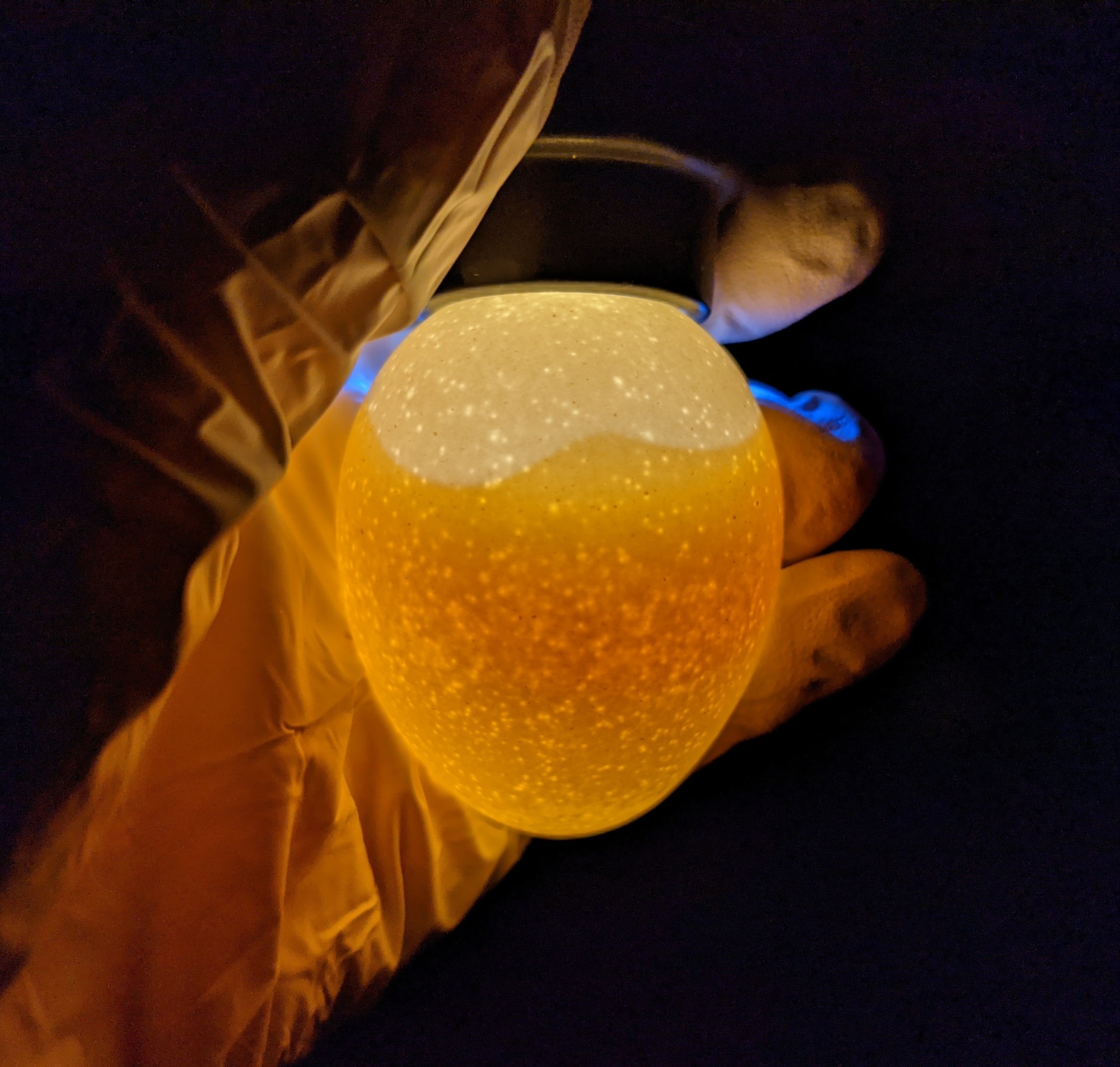
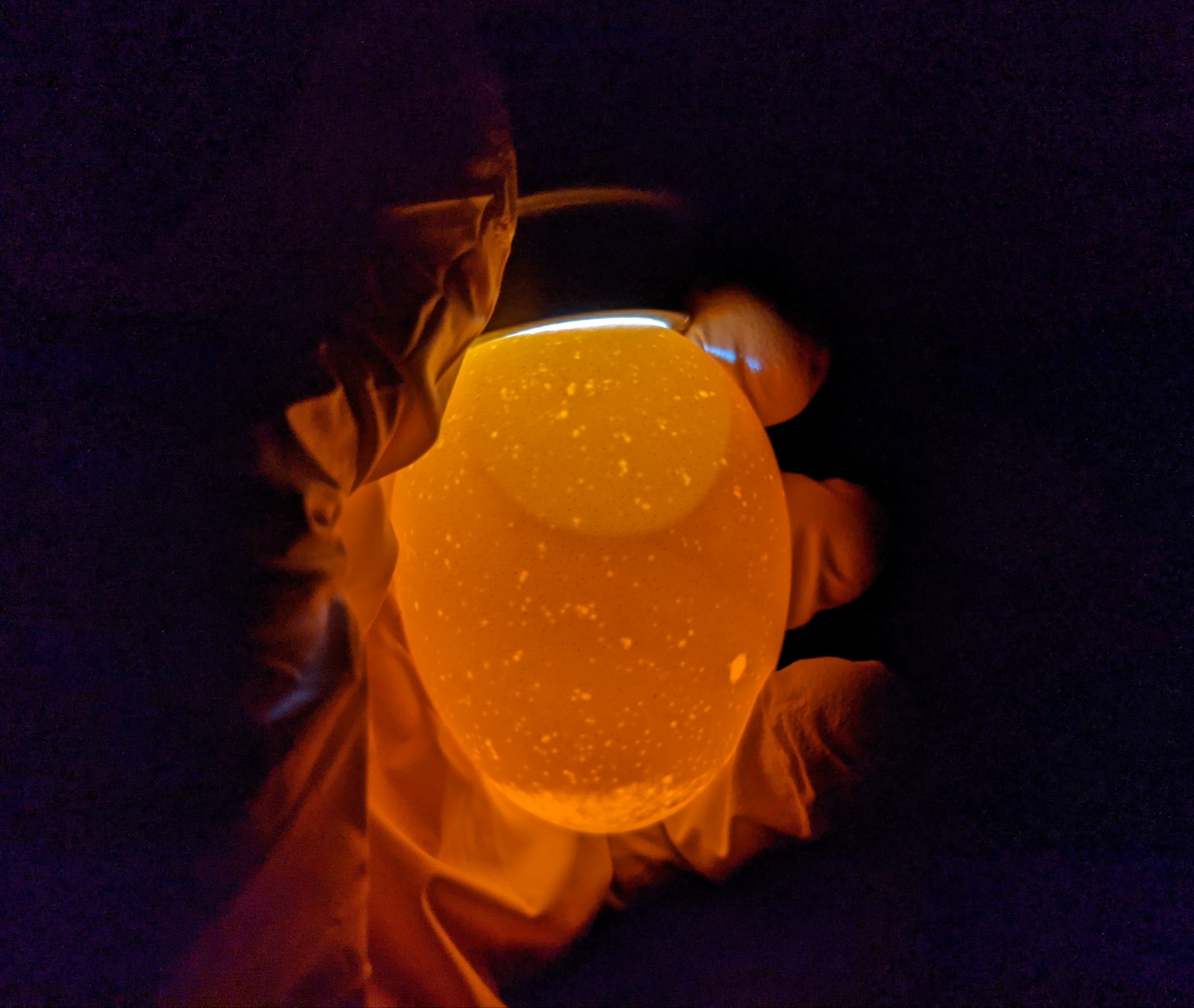
In short, the shipped eggs have been a disaster. USPS has proven itself consistently incapable of handling fragile, perishable items like eggs in a way that preserves their viability. As the holidays near, I shudder to imagine the kind of condition presents will arrive in this year…assuming that they actually do arrive at their intended destinations. Ta da! Here’s your late, wet, and crushed package!
Shipped eggs have always been a bit of a gamble because of the unknowns of how they’ll be handled in transit, but I’ve had good hatches from shipped eggs – even some traveling long distances – in the past. Now, it seems that even close proximity and careful packing can’t overcome the almost incomprehensible roughness with which packages are now handled by USPS and its shipping partners.
If you’re considering buying shipped hatching eggs, consider what they’ll likely be subjected to and how that may affect not only their ability to hatch but also their ability to thrive as young chicks. Buy local if at all possible to improve your chances for a good hatch.
